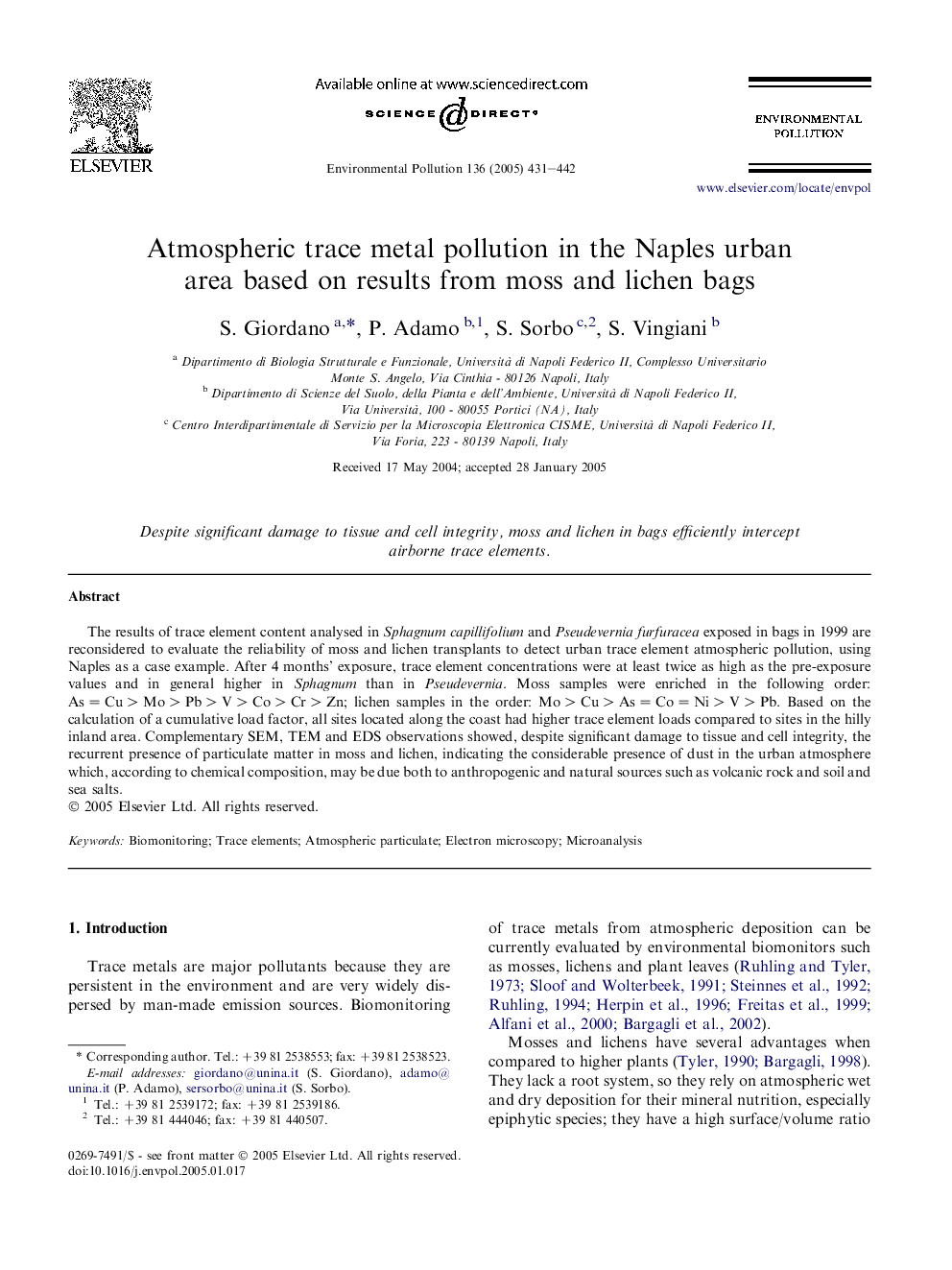| Article ID | Journal | Published Year | Pages | File Type |
|---|---|---|---|---|
| 9456243 | Environmental Pollution | 2005 | 12 Pages |
Abstract
The results of trace element content analysed in Sphagnum capillifolium and Pseudevernia furfuracea exposed in bags in 1999 are reconsidered to evaluate the reliability of moss and lichen transplants to detect urban trace element atmospheric pollution, using Naples as a case example. After 4 months' exposure, trace element concentrations were at least twice as high as the pre-exposure values and in general higher in Sphagnum than in Pseudevernia. Moss samples were enriched in the following order: As = Cu > Mo > Pb > V > Co > Cr > Zn; lichen samples in the order: Mo > Cu > As = Co = Ni > V > Pb. Based on the calculation of a cumulative load factor, all sites located along the coast had higher trace element loads compared to sites in the hilly inland area. Complementary SEM, TEM and EDS observations showed, despite significant damage to tissue and cell integrity, the recurrent presence of particulate matter in moss and lichen, indicating the considerable presence of dust in the urban atmosphere which, according to chemical composition, may be due both to anthropogenic and natural sources such as volcanic rock and soil and sea salts.
Related Topics
Life Sciences
Environmental Science
Environmental Chemistry
Authors
S. Giordano, P. Adamo, S. Sorbo, S. Vingiani,
